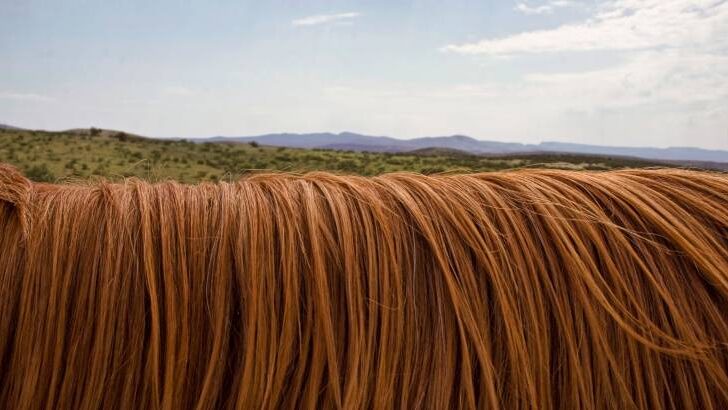Affiliate Disclaimer
As an Amazon Associate I earn from qualifying purchases. It helps me keep the website going. Thank you for your support.
Some breeds of horses are blessed with a luxuriously long and thick mane. It might even be naturally wavy! But maintaining this mane is much harder than a horse who has a naturally thin and short mane. This is where the techniques of pulling or cutting the mane come in.
Choosing between a pulled mane vs cut mane is down to personal preference. Some owners, especially those who regularly compete, prefer the look and practicality of a pulled mane.
Others choose a cut mane for its easier and quicker maintenance. You should choose the style of mane that fits your purposes, with the horse’s welfare in mind.
Regular maintenance of your horse’s mane, regardless of whether it is pulled or cut, is important. However, both methods have their advantages and disadvantages – read on to learn more!
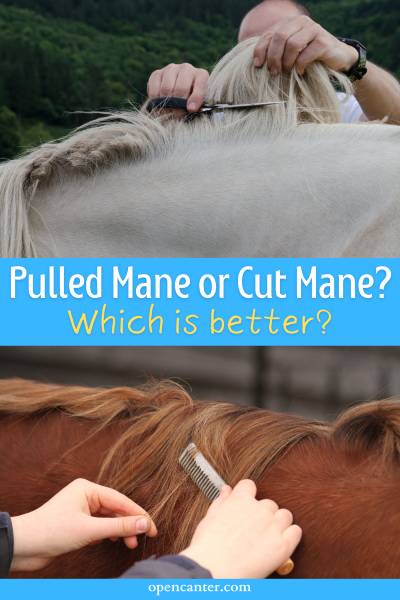
Pulled Mane vs Cut Mane: What Is The Difference?
The key difference between a pulled mane vs a cut mane lies in the name. A pulled mane has had individual hairs pulled out to make it thinner and shorter. A cut mane doesn’t involve pulling out any hair, but simply cutting the ends off with scissors.
The main difference between a pulled mane and a cut mane is the appearance. Pulling the mane results in a very sleek and well-groomed appearance. It is a popular method for show horses, as it both shortens and thins the mane.
A cut mane, while still neat, is generally more casual in appearance. A cut mane can be longer than a pulled mane. It is usually always thicker unless the horse has a very naturally thin mane. Cut manes are more popular with Western show horses, as the mane can be kept long but tidy.
Why Would You Pull A Horse’s Mane?
Pulling a horse’s mane has several purposes, most of which are associated with competition.
- Neat appearance: a pulled mane looks very neat and tidy, especially for shows
- Maintenance: a thinner and shorter mane is much easier to comb than a long and thick mane!
- Competition requirements: many disciplines require horses to be presented with their mane plaited into rosettes. This is a much easier process, with a much neater result, if the mane is pulled first.
- Functionality: a pulled mane is less likely to become tangled in the rider’s hands or tack.
- Enhanced visibility: a pulled mane can enable better visibility. This is important in disciplines where the horse’s neck and head carriage are judged, such as dressage.

Does Pulling A Horse’s Mane Hurt?
If done correctly, no. If you use the correct technique to remove only a few hairs at a time, minimal discomfort is caused. However, if you are not skilled at the technique, you can cause pain.
Just like humans, horses have nerve endings in their mane. These nerve endings are what is responsible for the pain that we feel when someone pulls our hair! However, pulling on a horse’s mane causes less pain for the horse than it does for us.
This is because the skin along the horse’s crest is much thicker than the skin on our scalp. The crest and withers are where horses normally groom each other. This is why these areas are well protected by skin, fat, and muscle.
This protection is why horses feel less pain than us when it comes to hair pulling. However, this does not mean that the horse feels nothing at all. It is likely that horses feel, at the very least, a dull sensation as hair is pulled out.
Depending on the individual horse will depend on the level of pain felt. Some horses are more sensitive than others and will feel more pain. Others are much more stoic, and will barely flinch.
However, scientific studies have shown that during the mane pulling process, horses’ heart rates were higher. This is an indicator of pain or stress, as well as other indicators like head tossing or moving around. The signs can even be as subtle as slightly showing the whites of the eyes or tightening around the muzzle. (source)
It is recommended to spread mane pulling out over a number of sessions. Regular maintenance is far more humane than one long session. Pulling the mane after exercise can also help, as the skin is more relaxed.
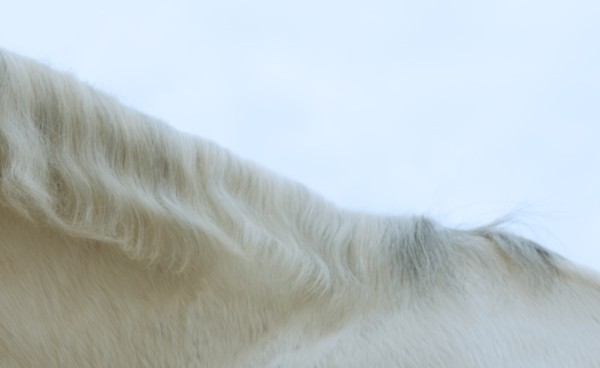
Pulled Mane vs Cut Mane: Advantages And Disadvantages
There are a few points to compare when it comes to pulled manes vs. cut manes. For starters, a pulled mane generally appears neater than a cut mane. A pulled mane is also usually much easier to plait into rosettes, with a much neater result. The exception to this is if the horse has a naturally thin mane.
Maintaining a pulled mane is more labor-intensive than a cut mane. Maintaining a cut mane is as simple as trimming the mane back to length if it gets too long. A pulled mane requires regular maintenance pulling, to keep even length and thickness.
Pulling a mane also requires more skill. While it still takes skill to achieve a clean and even cut mane, it is generally easier than pulling a mane. The pulling technique must be practiced so that you can pull without breaking hairs or causing discomfort.
Lastly, some horses do not tolerate having their mane pulled. While it does not necessarily cause pain, some horses dislike the sensation. This is especially true for horses who are particularly sensitive.
How To Pull A Horse’s Mane
Instead, schedule several shorter sessions, after exercise if possible. Start from the withers and work along the neck.
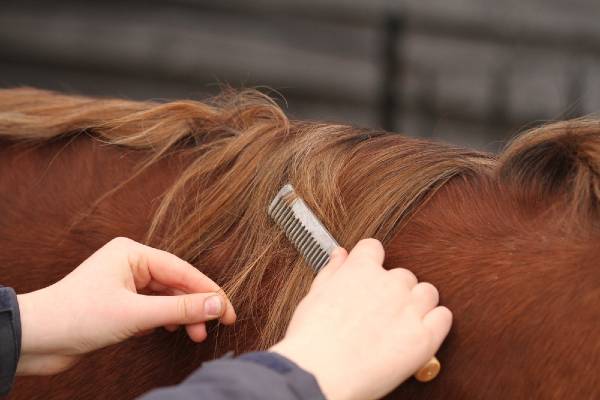
Cover the entire neck in a session, rather than focusing on a single area. The best way to succeed is to pull a little from the whole mane, rather than a lot from a single section.
You will also need to invest in a mane or pulling comb. This is a small comb, about three to four inches long, and usually metal.
Some people like to use latex gloves, to make gripping the hair easier. You may choose to slightly dampen the mane instead, to help with grip.
To start, take an inch-wide section of hair in your left hand and hold it at the ends. Using the comb, backcomb so that only a few long hairs are left in your left hand.
Backcombing involves combing in the opposite direction – from the ends of the mane towards the crest. Take the strands of hair in your left hand, and wrap them around the comb.
Secure the hair with your thumb and pull downwards to pull the hair out at the roots. Keep a steady pressure until the hair releases at the roots.
As you go, step back to check your progress. The overall length of the mane should be even, and of even thickness. Stepping back and reviewing can highlight areas that are still too long or too thick.
How To Cut A Horse’s Mane
The process to cut a horse’s mane is simpler. You don’t need any special tools, just a pair of sharp scissors and a comb or brush.
Start by combing the mane to remove any tangles. Once tangle-free, slightly dampen the mane, as this assists with an even cut.
Working in sections, hold the mane in your left or non-dominant hand. Use the scissors to cut the mane, removing small amounts at a time. Remember, you can always cut off more mane, but once it’s gone, it’s gone!
Make sure you step back every so often to check your progress. This will identify any unevenness. Generally, manes are cut so that they are the same length along the neck. However, if you have a particular style in mind, you may be cutting along a contour.
Once you have the mane at the desired length, you can blend the cut, if desired. A cut mane can result in a very blunt and artificial appearance. Blending the cut lightly tapers the ends of the mane, making it look more natural.
To blend the cut using scissors, work with the tips facing towards the roots of the mane. Once again in sections, you want to use the tips of the scissors to snip at the very tips of the mane. This will remove short lengths from only some of the hairs.
You can also use a mane-thinning comb, which often has a razor blade. Using this on the very ends of the mane cuts the hair, but not all at exactly the same length. This also gives a much more natural look.
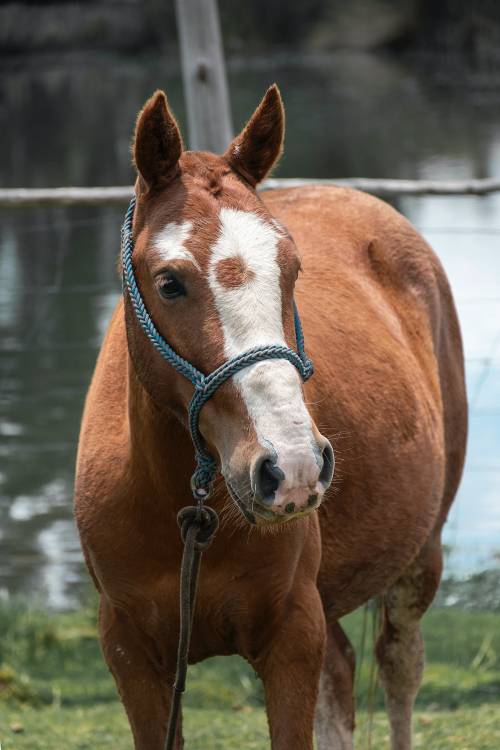
Pulled Mane vs Cut Mane – Final Thoughts
Choosing between a pulled mane vs cut mane for your horse is personal preference. Some owners who regularly compete need a short and thin mane to present nicely in the ring.
For others, a cut mane offers a better result and is less time-consuming. Some horses find mane pulling painful, and for these horses a cut mane is a better option. Either way, regular grooming and maintenance are important to keep your horse’s locks flowing!

